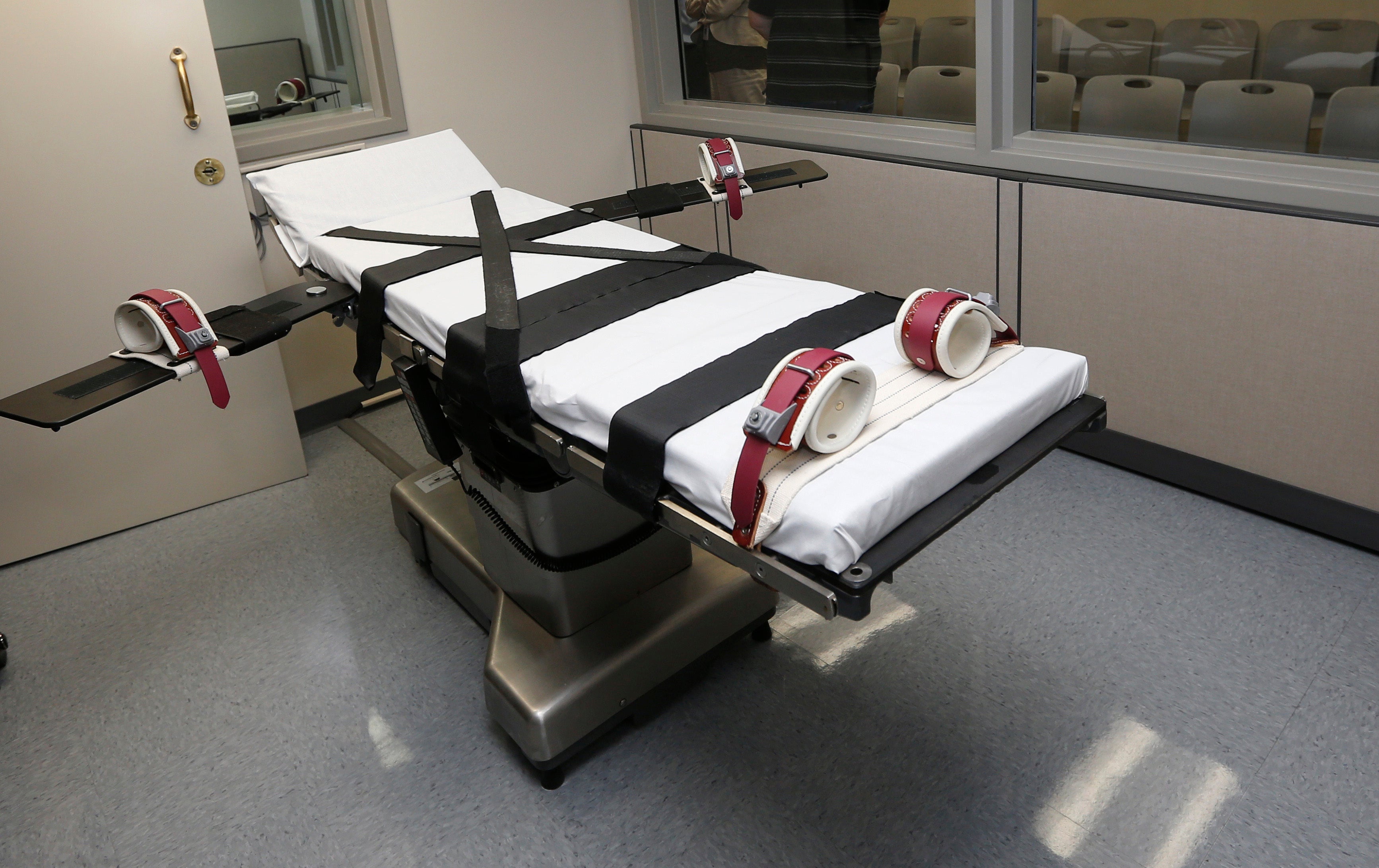Why are states like Alabama, which is planning to use nitrogen gas, exploring new execution methods?
An Alabama execution this week would be the first in the nation to use nitrogen gas

Your support helps us to tell the story
From reproductive rights to climate change to Big Tech, The Independent is on the ground when the story is developing. Whether it's investigating the financials of Elon Musk's pro-Trump PAC or producing our latest documentary, 'The A Word', which shines a light on the American women fighting for reproductive rights, we know how important it is to parse out the facts from the messaging.
At such a critical moment in US history, we need reporters on the ground. Your donation allows us to keep sending journalists to speak to both sides of the story.
The Independent is trusted by Americans across the entire political spectrum. And unlike many other quality news outlets, we choose not to lock Americans out of our reporting and analysis with paywalls. We believe quality journalism should be available to everyone, paid for by those who can afford it.
Your support makes all the difference.An Alabama execution Thursday that would be the first to use nitrogen gas is the result of a long history of problems with lethal injections since Texas first used the method in 1982, including difficulties finding usable veins and obtaining the necessary drugs.
Here’s a look at some of the issues death penalty states across the country are facing and why some, including Alabama, are considering alternative methods.
WHAT HAPPENED IN ALABAMA?
Alabama tried but failed to execute Kenneth Eugene Smith by lethal injection in 2022 for his role in the 1988 murder-for-hire slaying of a preacher’s wife.
The Alabama Department of Corrections called off the execution when the team could not get the required two intravenous lines connected to Smith. Officials then tried a central line, which involves a catheter placed into a large vein, but were unable to complete the process before the death warrant expired.
It’s not the first time Alabama has had difficulties establishing an IV line with a deadline looming.
In another scheduled execution in 2022, prison officials poked Alan Eugene Miller with needles for more than an hour trying to find a vein, and at one point left him hanging vertically on a gurney before state officials made the decision to call off the execution.
In that case, Alabama agreed not to use lethal injection to put Miller to death and any future effort to execute him will use nitrogen hypoxia.
WHY ARE STATES PROPOSING NEW EXECUTION METHODS?
Numerous other states that use lethal injection have encountered various problems with the execution method, including difficulty finding usable veins, needles becoming disengaged or problems sourcing or using the lethal chemicals.
“They've tried to fix lethal injection ... and they haven't been able to,” said Deborah Denno, a law professor at Fordham University and an expert in execution methods. “The same thing happened with electrocution. It's just sort of this continuing theme of pushing to get executions no matter the cost involved, and that did propel this change to nitrogen gas.”
In Oklahoma in 2014, condemned inmate Clayton Lockett writhed, clenched his teeth and attempted to lift himself up from the gurney after he had been declared unconscious when the state used a new drug, the sedative midazolam, in its three-drug method. Although prison officials attempted to halt the execution, Lockett was declared dead 43 minutes after the procedure began.
An investigation later revealed that a single IV line into Lockett’s groin, which was covered by a sheet, came loose and the lethal chemicals were injected into the tissue surrounding the injection site instead of directly into the bloodstream.
In Ohio in 2006, Joseph Clark’s lethal injection was stalled while prison technicians located a suitable vein, which then collapsed and Clark’s arm began to swell. Clark raised his head and said: “It don’t work. It don’t work.” Technicians ultimately found another vein, but Clark wasn’t pronounced dead until nearly 90 minutes after the process started.
Nitrogen gas isn't the only method states are exploring. South Carolina passed a law allowing a firing squad in 2021, prompted by an inability to obtain lethal injection drugs. The state developed protocols and was preparing to use the firing squad before a legal challenge that it and the electric chair are cruel and unconstitutional. Firing squad hasn't been used as an execution method in the U.S. since Utah in 2010, but five states currently authorize it.
Electrocution, hanging and other forms of lethal gas also remain on the books in several death penalty states.
WHAT ARE THE ISSUES WITH LETHAL INJECTION DRUGS?
Many states have had difficulty obtaining the lethal chemicals used to carry out executions. Manufacturers of many of the drugs have prohibited the use of their products being used to carry out executions or stopped manufacturing them altogether, leading many states to go to great lengths to shield their source of the drugs.
Before Oklahoma secured a source of the sedative midazolam in 2020 for its three-drug lethal injection method, the state was planning to resume executions using nitrogen gas after the prisons director said he was being forced to deal with “seedy individuals” who may have had access to them.
“I was calling all around the world, to the back streets of the Indian subcontinent,” Joe Allbaugh, then the head Oklahoma’s prison system, said at the time.
WHAT ABOUT NITROGEN HYPOXIA?
Nitrogen hypoxia is a proposed execution method that would force the inmate to breathe only nitrogen, depriving him or her of the oxygen needed to maintain bodily functions.
No state has used nitrogen hypoxia to carry out a death sentence. In 2018, Alabama became the third state — along with Oklahoma and Mississippi — to authorize the use of nitrogen gas to execute prisoners.